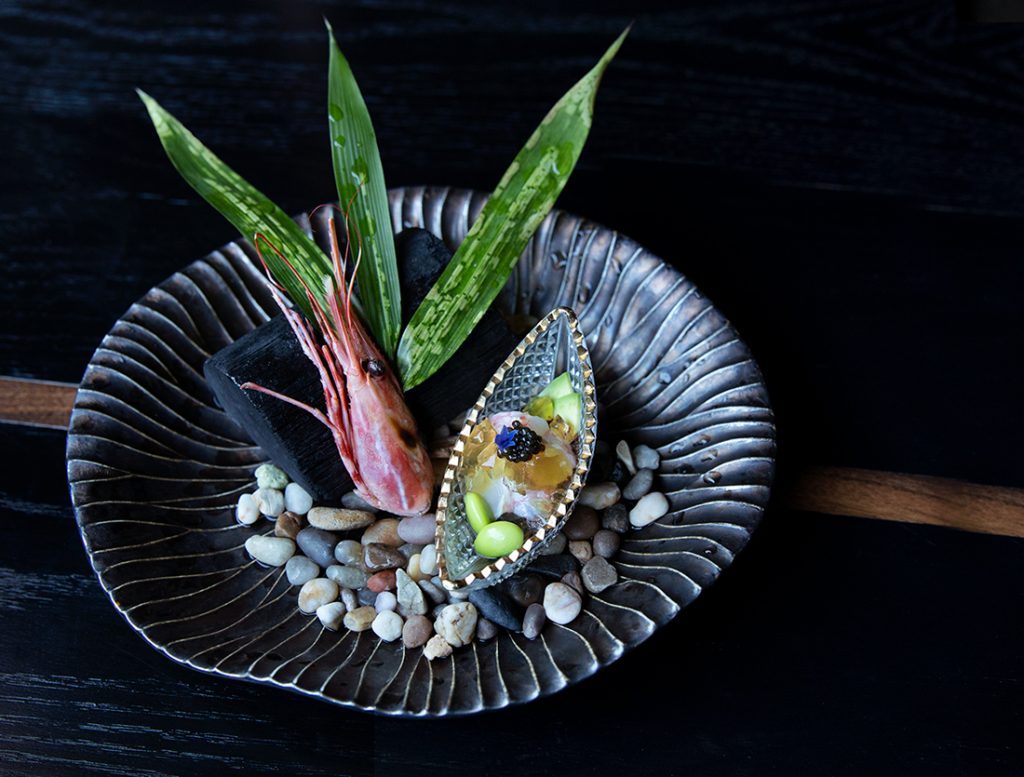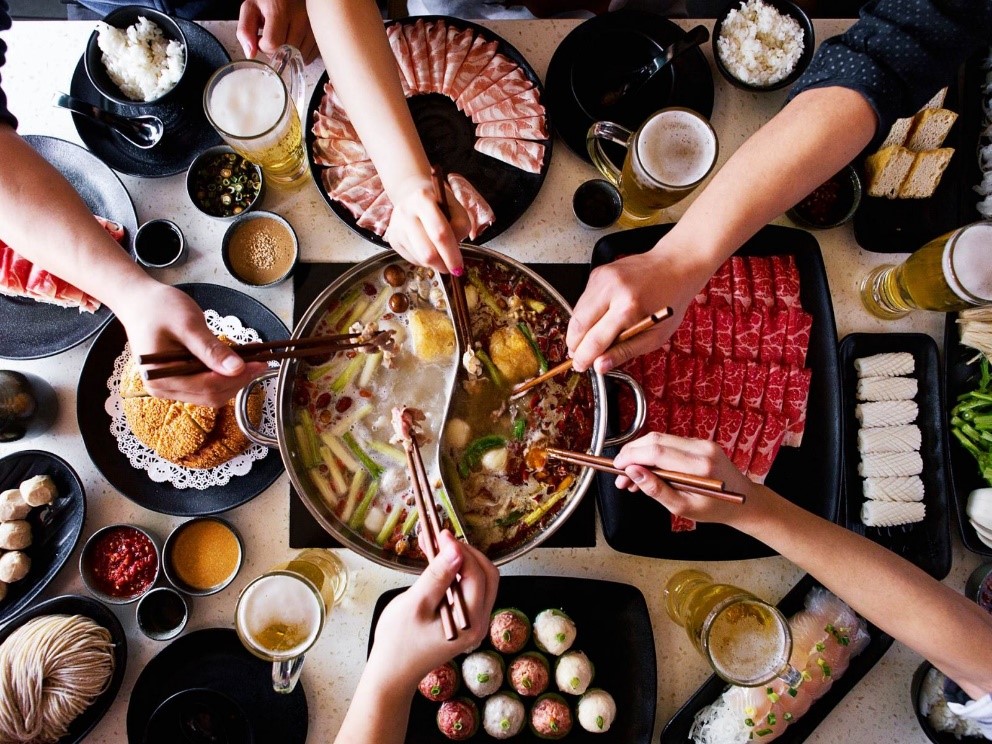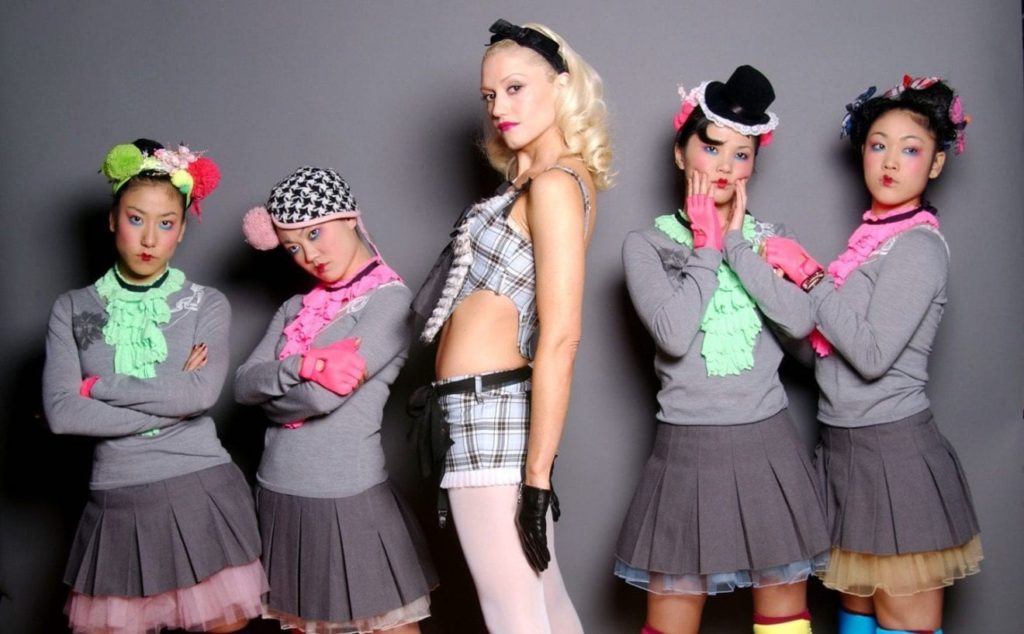Commonly referred to as a melting pot, American culture has been heavily influenced by the diversity of its citizens. Immigrants from all over the world have long contributed to shaping the country’s advancements in science and technology and preferences for fashion, architecture, music, movies, art, and especially food.
One trend that I’ve watched with fascination over the years is the increased popularity of Asian culture in the U.S. This caught my attention because growing up, Asian things were not considered cool. My friends made fun of me when seaweed snacks or rice crackers fell out of my lunchbox and they would dare each other to eat it. Today, people of all backgrounds are flocking to ramen houses, sushi bars, and boba tea shops. Going to Chinatown is now a trendy thing to do. Kanji character tattoos are popular, people are wearing Asian-inspired clothing and accessories, martial arts is a common hobby, and these same childhood friends of mine are willingly buying seaweed snacks from Trader Joe’s and eating rice crackers during their spa treatments.
I first noticed Asian culture infiltrating the American market in the early 2000s. Fascinated with the Harajuku neighborhood in Japan, Gwen Stefani had a song called “Harajuku Girls” in her 2004 debut solo album, featured Japanese backup dancers in her videos and on tour (Lodi, 2019), and launched her Harajuku Lovers brand in 2005 (Walker, 2005).
Celebrities such as Katy Perry and Paris Hilton also began wearing Asian-inspired fashion on television and Jennifer Aniston’s character, Rachel Greene, even wore a traditional Chinese dress in an episode of Friends. Suddenly the cheongsam my grandmother gave me, which I hid in the back of my closet, was looking pretty chic after all.
There was also a surge of different types of Asian cuisine in the restaurant landscape, especially Korean, Japanese, Taiwanese, Chinese, Thai, and Vietnamese. By 2018, Asian had become the most popular type of cuisine ordered in full-service and fast-casual restaurants in the U.S., and over the last five years, three of the top 10 fastest-growing flavor profiles have been Asian: honey sriracha, gochujang, and matcha (Sloan, 2019).
Consumer preferences for Asian cuisine also gave rise to high-culture and fusion dining. Asian food is now commonly featured on the menu of high-end American restaurants such as CUT in Los Angeles, which has a $185 Japanese Wagyu ribeye, one of the most expensive dishes in America (Myers, 2016). Some Asian culinary restaurants are even Michelin-starred, such as Japanese restaurant n/naka in Los Angeles and Korean restaurant Atomix in New York (Michelin Guide, 2020).

Asian food and beverage options in the U.S. continue to grow rapidly with the newest popular items being mochi donuts, Vietnamese iced coffee, katsu sando, and hot pot. The hot pot trend is especially amusing to me because I grew up eating this at home as comfort food and it was definitely not the meal that I invited my friends over for. Now people are willing to pay $30-50 per person to eat at hot pot restaurants such as Haidilao (Czinkota, 2018).

What caused Asian culture to become so in vogue in the U.S.? Asian food and attire are not new; boba tea was invented in Taiwan back in the 1980s (Wong, 2020), the cheongsam originated in Shanghai in the 1920s (Gao, 2016), and people in Japan have been eating sushi since at least the 1800s (Sushi, 2020). Is this driven by the influx of people immigrating from Asian countries? Asians began relocating to the U.S. in the 1850s when young men were recruited as laborers (“Asian Americans,” 2020). Now the Asian American population has grown by 72% over the last 20 years and is projected to become the largest immigrant group within the next 50 years (López, Ruiz, & Patten, 2017).
An increased Asian population has likely contributed to the spread of and enthusiasm for Asian culture, but I’m inclined to believe this is also prompted by an underlying consumer need to experience something new. When people get exposed to the same old thing, especially in food and fashion, they begin to experience cultural fatigue. As a result, consumers crave something new and exotic, even if that something new is actually hundreds of years old.
Although I wish the fascination with all things Asian had occurred a couple of decades earlier than it did, I appreciate that Asian culture is finally having its well-deserved time in America’s limelight.
References
Asian Americans then and now: Linking past to present. (2020). Asia Society. Retrieved from https://asiasociety.org/education/asian-americans-then-and-now
Czinkota, M. (2018, November 22). Creating hotter demand for the hot pot in the US. The Hill. Retrieved from https://thehill.com/opinion/finance/417844-creating-hotter-demand-for-the-hot-pot-in-the-us
Gao, S. (2016, December 9). A brief history of the cheongsam. Retrieved from https://theculturetrip.com/asia/china/articles/a-brief-history-of-the-cheongsam/
Gwen Stefani shares unexpected dance video for “Harajuku Girls.” (2019, June 20). Hidden Jams. Retrieved from https://hiddenjams.com/2019/06/20/gwen-stefani-dance-video-harajuku-girls/
Lodi, M. (2019, November 19). Gwen Stefani doesn’t really regret that ‘Harajuku Girls’ phase. The Cut. Retrieved from https://www.thecut.com/2019/11/gwen-stefani-doesnt-regret-harajuku-girls.html
López, G., Ruiz, N. G., & Patten, E. (2017, September 8). Key facts about Asian Americans, a diverse and growing population. Pew Research Center. Retrieved from https://www.pewresearch.org/fact-tank/2017/09/08/key-facts-about-asian-americans/
Michelin Guide. (2020). Retrieved from https://guide.michelin.com/en/restaurants/2-stars-michelin/3-stars-michelin
Moss, K. (2014, August 27). Celebrities in cheongsams: Who wore cheongsam best [Blog post]. UK Vogue Leader. Retrieved from https://ukvogueleader.wordpress.com/tag/kate-moss/
Myers, D. (2016, January 11). The 19 most expensive restaurant dishes in America. The Daily Meal. Retrieved from https://www.thedailymeal.com/eat/19-most-expensive-restaurant-dishes-america-0/slide-9
n/naka. (2020). Gallery.Retrieved from https://n-naka.com/gallery/
Sloan, A. E. (2019, May 1). A new wave of Asian cuisine. Food Technology Magazine. Retrieved from https://www.ift.org/news-and-publications/food-technology magazine/issues/2019/may/columns/consumer-trends-asian-cuisine
Sushi. (2020, January 13). New World Encyclopedia. Retrieved from https://www.newworldencyclopedia.org/p/index.php?title=Sushi&oldid=1030572
The best Los Angeles restaurants for hot pot. (2019, December 17). Dine L.A. Retrieved from https://www.discoverlosangeles.com/eat-drink/the-best-los-angeles-restaurants-for-hot-pot
Walker, R. (2005, June 19). Love. angel. product. baby. The New York Times Magazine. Retrieved from https://www.nytimes.com/2005/06/19/magazine/love-angel-product-baby.html?auth=login-google
Wong, M. H. (2020, April 29). The rise of bubble tea, one of Taiwan’s most beloved beverages. CNN Travel. Retrieved from https://www.cnn.com/travel/article/taiwan-bubble-tea-origins/index.html



7 Responses to When did Asian culture become so cool in America?